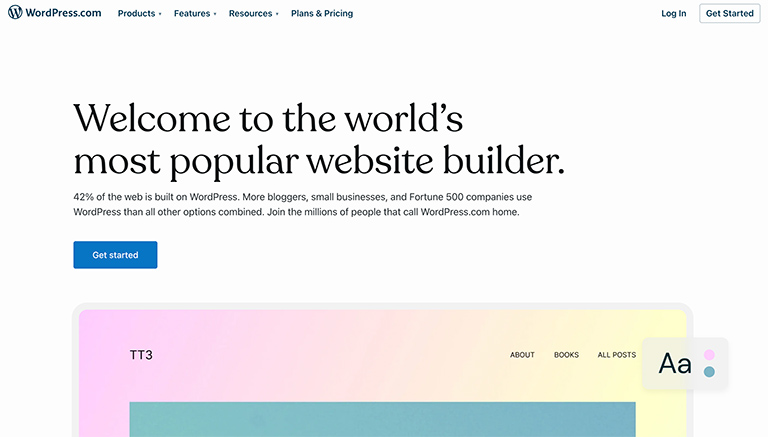In the digital age, the importance of mobile-first marketing cannot be overstated. According to data collected by Statista, mobile internet usage has skyrocketed in recent years, with an estimated 4.28 billion people globally accessing the web via mobile devices in 2022. With these numbers in mind, it’s clear that businesses need to prioritize mobile-first strategies in their web development process to maintain a competitive edge.

Mobile-first marketing is a paradigm shift that puts mobile interactions at the forefront of strategic planning. It’s about recognizing that the majority of your audience is likely to interact with your website on their mobile devices and therefore, your web development strategies should be designed with mobile as the default.
With the proliferation of smartphones and the reliance on them for daily tasks, the ‘mobile-first’ approach has become an essential strategy for businesses. This approach isn’t merely about making a website ‘mobile-friendly’. Instead, it’s about designing digital experiences with mobile users as the primary audience, without degrading the experience for desktop users.
For instance, a mobile-first approach can include optimizing your site for touch controls, ensuring it loads quickly on slower data connections, and prioritizing information to make sense and be more convenient for users on smaller screens.
Mobile-first marketing requires a thorough understanding of how your audience engages with your content on mobile devices and then crafting experiences that meet their needs and expectations. From design to content to performance, every aspect of your website should be thought through with mobile users in mind.
As we explore the various strategies involved in mobile-first marketing, it’s important to remember that a successful mobile-first approach hinges on a blend of technical execution, user-centric design, and continuously adapting to changing user behaviors and technological advancements.
Below are some web development strategies for mobile-first marketing that every business should consider.
1. Responsive Design
Responsive design is defined as a web design and development technique that creates a website or system that is “responsive” and adjusts accordingly to the size of a user’s screen. It will optimize a user’s browsing experience by creating a flexible and responsive web page, ideal for mobile viewing.
With a responsive design, your website’s layout will adjust on its own to suit a particular device, whether it’s a desktop, a tablet, or a mobile phone. This is crucial for improving user experience and engagement, which can significantly impact your conversion rates.

SEO Benefits of Responsive Design
Moreover, responsive design not only improves the user experience but also has positive implications for your site’s SEO. Search engines like Google prioritize mobile-friendly sites, especially after the introduction of mobile-first indexing. Therefore, by adopting responsive design, your site is likelier to rank in search engine results pages (SERPs), leading to increased visibility and organic traffic.
Adaptability and User Experience
This adaptability goes beyond just resizing and rearrangement of elements; it also includes considerations for touch controls and ensuring images and multimedia load efficiently. All these aspects contribute to an optimal user experience regardless of the device used.
Responsive design embodies the concept of “build once, run anywhere,” maximizing reach and efficiency. Through this approach, businesses can create a consistent and inclusive web experience for all users.
2. Mobile Optimization
While responsive design is about making sure your website looks good on all devices, mobile optimization takes this a step further. It’s about making sure your site not only looks good but also works well on mobile devices.
Mobile optimization involves many factors, including responsive design, site structure, page speed, and more. You should aim for fast loading times, easy navigation, and content that’s simple to read and interact with on a small screen.
Impacts of Mobile Optimization
A well-optimized mobile website can significantly improve your search engine rankings, increase the amount of time that people spend on your site, and lead to higher customer satisfaction rates.
In the era of mobile-first browsing, one crucial aspect of mobile optimization is the reduction of load times. Users today expect fast, seamless experiences when they browse on their mobile devices. If a page takes too longer to load, chances are the user will abandon it, negatively impacting your bounce rates.
Strategies for Mobile Optimization
Developers should minimize the use of large, uncompressed images and unnecessary code, streamline site elements, and leverage browser caching to improve load times. In addition, it’s essential to consider touch controls and how easily users can interact with your site elements on a smaller screen.
The Ongoing Nature of Mobile Optimization
Mobile optimization is not a one-time process; it requires constant testing and refinement based on user behavior and feedback.
Ultimately, a well-optimized mobile site will deliver a satisfying and engaging user experience, driving conversions, and fostering customer loyalty. It’s important to remain vigilant and continuously assess the mobile experience you offer, adjusting as necessary to meet evolving user needs and technological advancements.
3. User Experience (UX)
While responsive design is about making sure your website looks good on all devices, mobile optimization takes this a step further. It’s about making sure your site not only looks good but also works well on mobile devices. Mobile optimization involves many factors, including responsive design, site structure, page speed, and more. You should aim for fast loading times, easy navigation, and content that’s simple to read and interact with on a small screen.

Impacts of Mobile Optimization
A well-optimized mobile website can significantly improve your search engine rankings, increase the amount of time that people spend on your site, and lead to higher customer satisfaction rates. In the era of mobile-first browsing, one crucial aspect of mobile optimization is the reduction of load times. Users today expect fast, seamless experiences when they browse on their mobile devices. If a page takes longer to load, chances are the user will abandon it, negatively impacting your bounce rates.
Strategies for Mobile Optimization
Developers should minimize the use of large, uncompressed images and unnecessary code, streamline site elements, and leverage browser caching to improve load times. In addition, it’s essential to consider touch controls and how easily users can interact with your site elements on a smaller screen.
The Ongoing Nature of Mobile Optimization
Mobile optimization is not a one-time process; it requires constant testing and refinement based on user behavior and feedback. Ultimately, a well-optimized mobile site will deliver a satisfying and engaging user experience, driving conversions, and fostering customer loyalty. It’s important to remain vigilant and continuously assess the mobile experience you offer, adjusting as necessary to meet evolving user needs and technological advancements.
4. Accelerated Mobile Pages (AMP)
Accelerated Mobile Pages (AMP) is a Google-backed project designed to speed up page loading on mobile devices. Fast loading times are vital for keeping users engaged, and AMP can help achieve this.
The Mechanics of AMP
AMP are a stripped-down version of a webpage, designed to be extremely lightweight and fast loading. They are built using a specific set of web technologies and are designed to load almost instantly. Implementing AMP can significantly improve user experience and contribute to better rankings in mobile search results.
Consistency and Reliability of AMP
Beyond just speed, AMP also provide a consistent, reliable user experience. Given the mobile nature of AMP, pages are automatically responsive, ensuring they render well on various devices, screen sizes, and orientations.
Advanced Features of AMP
AMP also supports a wide range of features that were traditionally difficult to execute on mobile devices, such as embedding rich media objects and building sophisticated ads and analytics. Additionally, Google often prioritizes AMP in their “Top Stories” carousel, providing increased visibility for publishers who have adopted the technology.
AMP in the Broader Mobile Optimization Strategy
However, it’s important to note that while AMP can greatly enhance performance and visibility, it should be part of a broader mobile optimization strategy that includes aspects like responsive design, mobile-friendly navigation, and user-focused content. Ultimately, the goal of implementing AMP is to provide users with a fast and smooth browsing experience that keeps them engaged with your content and drives conversions.
5. Introduction to Progressive Web Apps (PWAs)
Progressive Web Apps (PWAs) offer an exciting avenue for mobile web development. PWAs can offer a full-screen experience, push notifications, offline functionality, and even access to device hardware, just like native apps, but are accessed and installed from a browser without the need for app stores. PWAs can give users a high-quality, app-like experience while browsing a website on mobile devices. This helps to increase user engagement and provide a more immersive user experience.
Unified Experience Across All Devices
Moreover, PWAs offer the benefit of a unified experience across all devices. Instead of creating separate versions for different platforms (iOS, Android, web), developers can build a single PWA that works uniformly across all devices, reducing development time and costs.
Simplified Updates and Maintenance
This approach also simplifies updates and maintenance since changes are made in one place and automatically apply across all platforms. Importantly, while PWAs can mimic the look and feel of native apps, they still retain the shareability and linkability of the web, allowing users to easily share access to the PWA through a simple URL.
6. SEO for Mobile
Implementing search engine optimization (SEO) is as imperative for mobile devices as it is for desktops. SEO practices not only help in improving your website’s visibility but also enhance the user experience, especially for mobile users. A mobile-optimized website should adhere to best practices like clean and efficient coding, fast-loading pages, and a design optimized for mobile interfaces.
Google’s Mobile-First Indexing
As Google has switched to mobile-first indexing, it signified the mobile version of a website becoming the most common and primary starting point for what Google incorporates in its search index and the baseline for how they determine rankings. Therefore, neglecting mobile SEO means potentially missing out on a significant amount of web traffic.
Local SEO for Mobile
Furthermore, mobile SEO should consider aspects unique to mobile browsing, such as local SEO. Given that many mobile searches are conducted by users on the go, optimizing for local search can help businesses with a physical presence appear in search results for users nearby. This includes claiming and optimizing your Google My Business listing, utilizing local keywords, and encouraging customer reviews.
Voice Search Optimization
Similarly, voice search optimization is increasingly relevant with the rising use of digital assistants on mobile devices. This involves targeting long-tail keywords and phrasing your content in a more conversational tone to match the way users typically speak.
Adapting to Mobile User Behavior
Mobile SEO is not just about fitting your content onto a smaller screen but adapting your strategies to match the distinct behaviors, preferences, and needs of mobile users. By doing so, businesses can ensure they’re reaching their audience effectively, regardless of the platform they’re using.
7. Mobile-First Content Strategy
The content on your website must be designed for mobile-first consumption. This means short, concise sentences and paragraphs, clear headers, and lots of white space. It also means leveraging multimedia like images, audio, and video that can easily be consumed on a mobile device.
Importance of Structured Data
Don’t forget about the importance of structured data to provide context about your content for search engines. This can enhance your visibility in mobile search results. It’s essential to remember that the way users consume content on mobile devices differs from desktops. On mobile, users often have shorter attention spans and may be multitasking or on the go.
Delivering Immediate Value
Therefore, a well-crafted mobile-first content strategy should focus on delivering immediate value. Use clear and compelling headlines, put the most pertinent information at the top, and break up longer pieces of content into digestible chunks. Interactive content like quizzes or polls can also be beneficial for increasing user engagement on mobile.
Optimizing Multimedia for Mobile
It’s also vital to optimize images and videos for mobile to ensure they load quickly and don’t consume too much data. In essence, a mobile-first content strategy should prioritize brevity, clarity, engagement, and speed, delivering a seamless and enjoyable experience for users across all mobile devices.
8. Speed and Performance Optimization
Speed is a critical factor in web development strategies for mobile-first marketing. Since mobile users are more likely on the go than not, they expect quick, seamless experiences. A fast-loading site not only enhances user satisfaction but also contributes positively to SEO, as speed is a known ranking factor in Google’s algorithm.

Improving Site Speed
One way to improve your site’s speed is by optimizing images and other media files. Additionally, minimizing the use of heavy JavaScript and CSS, leveraging browser caching, and using a content delivery network (CDN) can significantly improve load times.
Utilizing Speed Testing Tools
Google-engineered PageSpeed Insights is one of the most reputably reliable tools to use when identifying areas for improvement. Regularly testing your site’s speed and performance is crucial in identifying potential bottlenecks and areas for improvement.
Optimizing Server Response Times
Server response times should also be optimized, as this can significantly influence your site’s overall load time. This can be achieved by ensuring your web hosting service is reliable and adequately powerful for your site’s demands.
Exploring Emerging Technologies
Considering emerging technologies like HTTP/2, which can enhance load speed by allowing multiple simultaneous interactions between the server and the client, can also be beneficial.
In essence, speed and performance optimization requires a comprehensive approach that considers every element of your website. Speed and performance optimization is, therefore, a crucial aspect of a mobile-first web development strategy.
9. Integrating Social Media
Integration of social media into your website can be beneficial since a large percentage of social media consumption happens on mobile devices. This integration can increase your website’s exposure and easier for visitors to interact with the content on it. Fostering engagement and expanding your reach, social media integration can also help enrich your site’s content and improve its SEO.
Enriching Content and Improving SEO
When users share content on social media, it can potentially generate backlinks to your site, which can boost its ranking in search engine results. Additionally, social media feeds can keep your site constantly updated with fresh content, another positive signal for search engines.
Optimizing Social Media Elements for Mobile
As part of your mobile-first strategy, it’s crucial to ensure that these social media elements are optimized for mobile. For instance, share buttons should be large enough to tap easily on a small screen, and social feeds should be responsive to ensure they display correctly regardless of device or screen size.
Integrating User-Generated Content
Lastly, integrating user-generated content from social media can add an authentic, relatable element to your site, further enhancing the mobile user experience.
10. Testing and Analytics
Cross-Device Testing
Testing your website across different devices is an essential part of a mobile-first strategy. Given the range of devices, operating systems, and screen sizes available, it’s important to ensure that your website is functional and visually appealing on all platforms. Tools like Google’s Mobile-Friendly Test can aid in simulating different devices and providing a sense of how your site performs across different conditions.
Utilizing Analytics
Using analytics tools or platforms, such as Google Analytics, allows you to understand your users’ behavior. You gain insights into the types of devices your audience uses, their browsing habits, and preferences. This information can inform decisions about design, layout, and content to ensure your mobile website meets user needs and expectations.
A/B Testing
A/B testing different designs, layouts, and content is a powerful way to fine-tune your mobile website. By comparing two versions of a webpage, you can determine which one performs better in terms of engagement and conversion rates. Regular A/B testing allows you to continuously improve the effectiveness of your mobile site.
Mobile User Journey Mapping
Understanding the importance of mobile user journey mapping is essential in developing a successful mobile-first strategy. By following the paths users take when interacting with your website, you can identify potential areas of friction or drop-off points that may hinder user engagement or conversion.
Heat Mapping
Incorporating heat mapping tools provides valuable insights into how your users interact with specific elements of your website on different devices. This can include which areas they click on or how far they scroll, which can inform design and layout decisions.
Data-Driven Improvements
With the data obtained through analytics, A/B testing, user journey mapping, and heat mapping, you can make informed decisions and necessary changes to improve the overall user experience and boost conversion rates.
Continuous Testing and Refinement
Remember, maintaining an effective mobile-first website requires continuous testing and refinement. As user behavior, technological trends, and search engine algorithms evolve, so too must your mobile-first strategy. Regularly analyzing performance data and making adjustments based on these insights ensures your website remains effective and competitive in the mobile-first era.
11. WordPress: The Leading CMS for Mobile-First Marketing
WordPress is a powerful content management system (CMS) renowned for its user-friendly interface, scalability, and the availability of a multitude of mobile-optimized themes and plugins. This makes it an effective tool for implementing a mobile-first marketing strategy.

The Value of WordPress Experts
While WordPress is known for its accessibility to non-technical users, fully leveraging its capabilities for a mobile-first approach may require deeper technical expertise. Hiring a WordPress expert or a web developer well-versed in WordPress can be invaluable in optimizing your website for mobile viewing.
Optimizing WordPress for Mobile
A WordPress expert can ensure your website is fully mobile-optimized. This can involve selecting and customizing mobile-friendly themes, installing and configuring plugins that enhance mobile performance, and tailoring your website’s layout, navigation, and content for optimal mobile user experience.
User Interaction Analysis
Understanding how users specifically interact with your site on mobile can identify areas needing improvement. Tools like heat maps can visualize where users tap or scroll on your site, while session recording provides a detailed look at real users’ navigation experiences.
Analytics and Performance Tracking
Using analytics tools, you can track key performance indicators such as load times, bounce rates, and conversion rates. This data helps you evaluate your mobile-first strategies’ effectiveness and inform necessary adjustments or enhancements.
Regular Mobile Performance Testing
Regular testing of your site’s mobile performance ensures your website remains optimized as it evolves. Tools like Google’s Mobile-Friendly Test or PageSpeed Insights can provide actionable insights to maintain and improve your mobile site’s effectiveness.
Data-Driven Decisions
Data derived from user interaction analysis, analytics, and performance testing can help make data-driven decisions. These decisions can enhance user experience, improve website performance, and ultimately, boost your mobile-first marketing efforts.
Ongoing Maintenance and Optimization
A mobile-first approach to web development is not a one-time task but requires ongoing maintenance and optimization. Regular updates, performance checks, and user feedback analysis are essential for a sustainable and successful mobile-first WordPress website.
Making the Move to Mobile
A mobile-first approach to web development is no longer optional; it’s a necessity for any business that wants to stay competitive in today’s digital landscape. By implementing these strategies, you can create a website that not only looks great on mobile devices but also provides an exceptional user experience, helping to drive engagement and conversions. A well-executed mobile-first strategy can ultimately lead to increased brand loyalty, more customer engagement, and higher revenues.
In this age of rapidly advancing technology, a mobile-first strategy is key to ensuring that businesses stay ahead of the curve. It enables businesses to reach consumers directly, in real time, and in a personal way, which is more effective than traditional marketing techniques.
The rise of smartphones and the sheer amount of time that people dedicate to their mobile devices means that businesses can no longer afford to ignore this platform. From browsing to shopping to socializing, mobile is now a significant part of the customer journey. As such, businesses must not only be present on this platform, but they must excel at it, providing intuitive navigation, fast loading times, and an overall seamless user experience.



Leave a comment
Have something to say about this article? Add your comment and start the discussion.